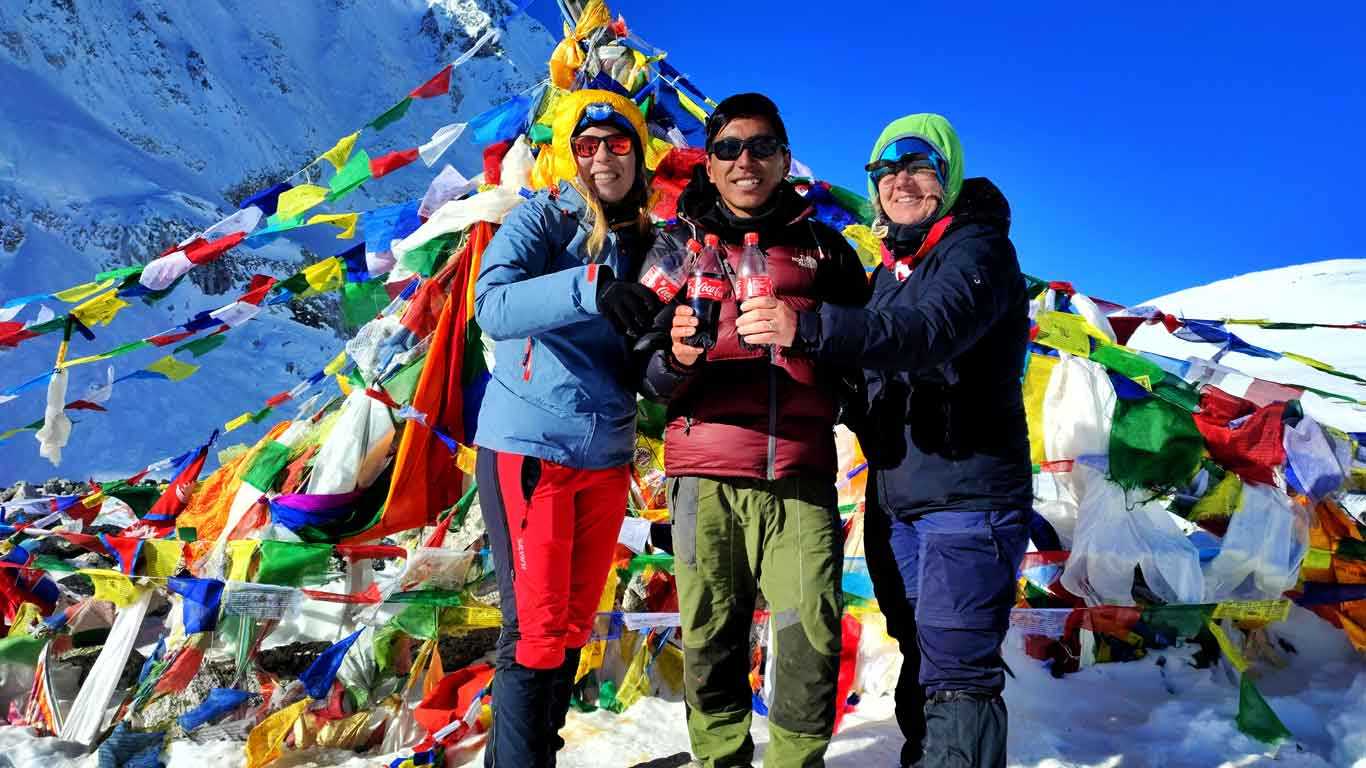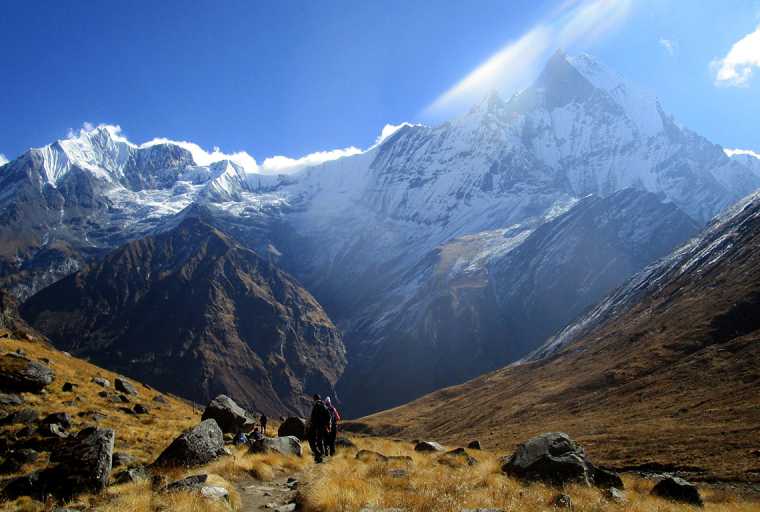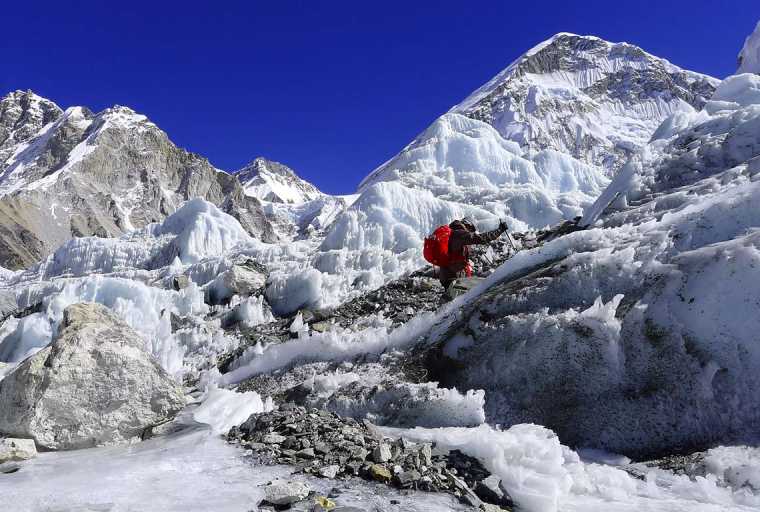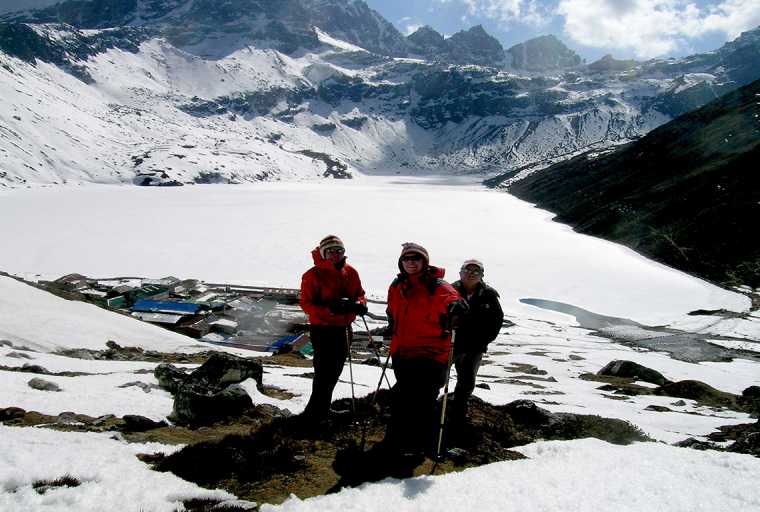Restricted Areas in Nepal

Nepal, a country adorned with breathtaking landscapes and rich cultural heritage, has always been a top destination for adventurous souls and curious wanderers. While most regions of Nepal welcome travelers with open arms, there exist certain areas known as "Restricted Areas," shrouded in limited accessibility.
Although these restricted zones present challenges to reach, they hold unparalleled beauty and immense cultural significance. In this blog post, you will explore the enchanting world of restricted areas of Nepal. This guide provides essential information, permits, and insights to embark on a once-in-a-lifetime journey.
What is a restricted area in Nepal?
A restricted area in Nepal refers to a specific area or region within the country that has limited tourist access and requires special permits for entry. The Nepalese government carefully regulates these areas to control and monitor tourism, preserving their unique cultural, ecological, and geopolitical significance.
Why are there restricted regions in Nepal?
Nepal designated restricted regions to conserve natural habitats, protect local traditions, manage tourism sustainably, and ensure border security. Here are some significant purposes for establishing these restricted areas:
Preservation of culture and tradition
Some regions in Nepal are home to indigenous communities with ancient cultural practices and traditions. Designating these areas as restricted ensures that their way of life remains protected from the potential impact of mass tourism and modernization.
Environmental conservation
Certain parts of Nepal possess fragile ecosystems, rare wildlife, and endangered plant species. By restricting the number of visitors, the authorities can better manage and preserve these regions' natural environment and biodiversity.
Geopolitical sensitivity
Some areas in Nepal are located near international borders or have geopolitical sensitivities. Regulating access to these regions helps maintain national security and sovereignty.
Sustainable tourism
Controlling the number of tourists in restricted areas ensures that the inflow of visitors is sustainable and does not overwhelm the local resources or infrastructure.
Cultural heritage protection
Many restricted areas in Nepal hold significant religious and historical sites. Managing tourism through permits helps safeguard these cultural treasures for future generations.
Promoting offbeat tourism
By designating certain regions as restricted, the government encourages tourists to explore lesser-known and off-the-beaten destinations, distributing the benefits of tourism across the country.
Legal Regulations Governing Restricted Areas in Nepal
The Nepalese government, through the Department of Immigration and other relevant authorities, implements legal regulations to control access to restricted areas. These regulations include:
Permit requirements
Travelers wishing to visit restricted areas must obtain special permits, also known as Restricted Area Permits (RAP), from the Department of Immigration. These permits specify the region, duration of stay, and other conditions.
Authorized guided tours
Authorized guides must accompany tourists in restricted areas. Alternatively, they can be part of organized tours to ensure proper monitoring and adherence to the rules.
Permit fees
Travelers are required to pay a fee to obtain restricted area permits. The cost may vary depending on the region and duration of the visit.
Validity and duration
Restricted area permits have specific validity periods. Travelers must abide by the permitted duration of their stay in the designated areas.
Compliance with regulations
Visitors must strictly adhere to the guidelines and respect local customs, environmental norms, and cultural sensitivities.
Accessible areas vs. Restricted areas
Accessible areas in Nepal are easily reached by visitors, offering popular tourist sites, local activities, and cultural landmarks. In contrast, restricted areas require special permits, often safeguarding fragile ecosystems, cultural sanctity, or addressing security concerns.
The table below provides detailed information on the differences between these two types of areas:
| Topic | Accessible Areas | Restricted Areas |
| Definition | Areas that are open to the public, easily reachable, and often developed for tourism or local activities. | Areas that have limited or controlled access due to safety, security, conservation, or other cultural reasons. |
| Accessibility | Generally easy to reach via roads, trails, or transportation services. | Access might be restricted due to rugged terrain or remoteness. |
| Permits | Generally, no special permits are required for entry. | Special permits or approvals from relevant authorities are needed to enter. |
| Conservation | Some accessible areas might have conservation efforts but are open to visitors. | Restricted areas often have stricter conservation measures in place to protect ecosystems, wildlife, or archaeology. |
| Tourism Development | Often well-developed with infrastructure, accommodations, and facilities. | May have limited or no tourism infrastructure for preservation purposes. |
| Cultural Sites | Accessible areas might include well-known cultural heritage sites, and visitors can freely explore them. | Restricted areas could include culturally sensitive sites integral to indigenous communities. These sites may be restricted to protect the local way of life. |
| Wildlife Reserves | Accessible wildlife reserves are open for eco-tourism and wildlife watching. | Restricted wildlife reserves might only allow scientific research or limited entry to protect animals and habitats. |
| Security | Generally safe and without major security concerns. | Restricted due to security, political instability, or military presence. |
| Photography and Media | Visitors can take photos and document their experiences. | Photography and media activities may require permits or be prohibited. |
| Tourism Impact | Higher tourist footfall potentially impacts local culture and the environment. | Restricted to prevent over-tourism and maintain ecological balance. |
Major Restricted Areas in Nepal
Upper Mustang
Upper Mustang is located in the north-central part of Nepal. It lies in the rain shadow of the Himalayas, resulting in a unique desert-like landscape. It is restricted to protect its Tibetan-influenced culture and ancient traditions. Travelers must obtain a special Restricted Area Permit (RAP) and travel with a registered trekking agency to explore this mystical land. Major attractions include the walled city of Lo Manthang, ancient monasteries, colorful rock formations, sky caves, mystic traditional rituals such as Sky Burial, Bon and Buddhism practices, and stunning views of the Niligiri and Annapurna ranges.
Upper Dolpo
Situated in the far-western region, Upper Dolpo is renowned for its rugged terrain and remoteness. It is restricted to conserving its pristine natural beauty and protecting its inhabitants' cultural heritage, the Dolpo-pa people.
Obtaining a special RAP is necessary to venture into this restricted zone. Significant attractions in Upper Dolpo include the Phoksundo Lake, Shey Gompa, unique Bon, and Buddhist monasteries, and the chance to witness the nomadic lifestyle of the locals.
Lower Dolpo
Lower Dolpo lies in the midwestern region and is restricted to safeguard its natural beauty and cultural heritage. The area is known for its remote and rugged terrain, ancient monasteries, and mystical Phoksundo Lake. Travelers must obtain a RAP to visit Lower Dolpo.
However, it's a lifetime opportunity to experience the traditional lifestyle of the local people, which has remained unchanged for centuries.
Humla
Humla remains one of Nepal's most isolated and restricted areas in the far northwestern region. The region's cultural heritage and fragile environment are safeguarded through controlled tourism. Travelers need a RAP to explore Humla. Major attractions include the Limi Valley, ancient monasteries, remote villages, and the trek to the sacred Mount Kailash in Tibet.
Taplejung
In the far eastern part of Nepal, Taplejung is a restricted region known for its diverse biodiversity and picturesque landscapes. The primary purpose of the restrictions is to preserve the Kanchenjunga Conservation Area and protect its wildlife and unique flora.
A RAP is required to trek in this area. The major attraction is the Kanchenjunga massif, the third-highest mountain in the world, along with the cultural richness of the local ethnic communities.
Dolakha
Dolakha, located in the central part of Nepal, is restricted due to its proximity to the Tibetan border and the significance of the area in Nepal's history.
A special restricted permit is required to explore this region, which offers stunning views of the Himalayan peaks, including Gauri Shankar and Melungtse. The area also houses religious sites like the Dolakha Bhimsen temple, attracting trekkers and pilgrims.
Tsum Valley- Gorkha
Tsum Valley is a hidden Gorkha district treasure nestled against the Tibetan border. Restricted to preserve its unique culture and pristine environment, travelers need a RAP and must travel with an authorized trekking agency.
The Tsum Valley is renowned for its ancient monasteries, including the Mu Gompa. The serene landscape with the warm hospitality of the local Tsumba people is also worth experiencing.
Sankhuwasabha
In eastern Nepal, Sankhuwasabha is restricted to protect the Makalu Barun National Park and its diverse wildlife. Trekkers require a RAP and a Makalu Barun National Park entry permit to travel here. The area offers challenging trekking trails, picturesque landscapes, and the opportunity to spot various endangered species.
Solukhumbu
Solukhumbu is famous for housing the Everest region, including Mount Everest, the world's highest peak. The area is restricted to conserve its natural beauty and protect the culture of the Sherpa community.
Trekkers need a RAP and a Sagarmatha national park entry permit to explore the region. However, they do not have to visit immigration to obtain these permits. Major attractions include the Everest Base Camp trek, Tengboche Monastery, and stunning views of the Himalayas.
Rasuwa
Rasuwa, located in northern Nepal, is restricted due to its proximity to the Tibetan border and its spiritual significance. To visit this area, travelers need a RAP. The region offers trekking and cultural exploration opportunities, with attractions like the Langtang Valley, Gosaikunda Lake, and the Langtang National Park.
Manang
Manang is a restricted region situated in the Annapurna Conservation Area. The area is restricted to protecting the local culture and preserving the environment. Trekkers require a RAP and an Annapurna Conservation Area Permit (ACAP) to explore the region.
Major attractions include the Annapurna Circuit Trek, ancient monasteries, and panoramic views of the Annapurna and Dhaulagiri Mountain ranges.
Bajhang
Bajhang is a remote and restricted region in the far-western part of Nepal. The area is known for its untouched natural beauty, rugged terrain, and abundant cultural diversity. Travelers exploring Bajhang must obtain a RAP to access this captivating region.
This restricted area of Bajhang offers unique trekking experiences, showcasing the beauty of remote locations in Nepal. Visitors can interact with local ethnic communities, fostering cultural exchange and understanding. They also witness the people's traditional lifestyle, immersing themselves in this region's rich heritage.
Manaslu Nubri Valley- Gorkha
Nestled in the Gorkha district, the Manaslu Nubri Valley is restricted due to its proximity to the Tibetan border and sensitive geopolitical significance. Trekkers require a restricted area permit and a trekking permit to travel here. The area offers diverse landscapes, pristine forests, traditional Tibetan villages, and breathtaking views of the Manaslu mountain range.
Mugu
Situated in the far northwestern region of Nepal, Mugu is a restricted area surrounded by majestic Himalayan peaks. Traveling to Mugu requires a RAP to preserve its pristine landscape and cultural heritage.
The Mugu region offers trekkers an off-the-beaten-path adventure, with picturesque trails, serene lakes, and encounters with indigenous communities that have retained their traditions over generations.
Darchula
Darchula lies in the far western part of Nepal. It is also one of the restricted regions of Nepal known for its breathtaking beauty and cultural richness. Travelers must obtain a RAP to explore Darchula.
This restricted area offers a rare opportunity to trek through untouched wilderness. So, its remote and pristine landscapes make it an ideal destination for backpackers and those seeking an authentic cultural experience in Nepal's hidden corners.
Tips for Exploring Restricted Areas in Nepal
Traveling to restricted areas in Nepal offers an extraordinary adventure. Make the most of your experience with these practical tips.
Obtaining the necessary permits
Before traveling to any restricted region, obtain the required permits, like the Restricted Area Permit (RAP) and any additional permits specific to the area you plan to visit. Ensure you have all the necessary documents before starting your journey.
Choosing an authorized trekking agency
When visiting restricted areas in Nepal, traveling with an authorized trekking agency like Himalayan Trekkers is mandatory. Choose a reputable agency with experienced guides who are familiar with the region. They must provide valuable insights into the local culture and customs.
Hiring local guides and porters
Engage local guides and porters who have an intimate understanding of the area. They provide valuable insights into the culture and terrain and ensure a smoother travel experience while supporting the local economy.
Preserving endangered flora and fauna
Respect the delicate ecosystem of restricted areas by refraining from disturbing plants and wildlife. Follow designated trails and minimize your impact on nature.
Responsible tourism in sensitive ecosystems
Adhere to the principles of responsible tourism to protect vulnerable environments. Avoid littering, use eco-friendly products, and be mindful of your carbon footprint.
Local initiatives for sustainable development
Support local conservation efforts and community-driven projects that promote sustainable development. Consider contributing to local environmental initiatives during your visit.
Conclusion
Nepal's hidden corners hold special places for curious adventurers. These restricted areas in Nepal have held onto their history, offering a glimpse into the past. The locals have cherished their traditions for generations; you can be part of their timeless story.
Exploring these unique spots brings experience you won't find anywhere else in Nepal. As you venture through these restricted areas, remember you're not just discovering history but becoming a chapter in it.












